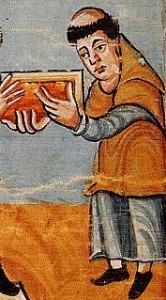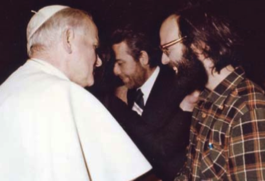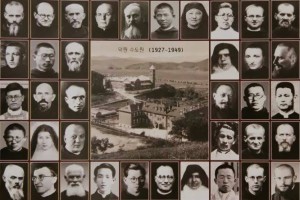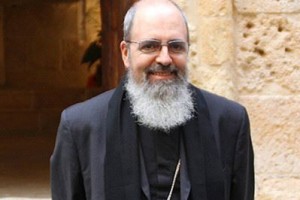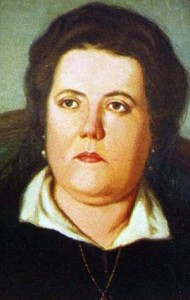We are snowed-in today. The weather is treacherous with the snow and wind outside that I have been able to think about some other things today. Snow days are good for the soul. The recent years have found me thinking more and more about the reasonableness of faith and ecology. The leadership and advocacy for the proper use of the land, air and sea by Patriarch Bartholomew (Constantinople), Pope Benedict XVI and now Pope Francis have raised some good questions about the coherent Christian response to the needs of our environment. These religious leaders have provided good thinking and ways of proceeding without dipping into the reigning ideologies of the political left. For example, Benedict raised the horizons and limitations between human and environmental ecologies. Fast forward, across my computer screen came a very brief note about sustainability by Abbot Tryphon, an abbot in the Orthodox Church living in the Pacific Northwest. For me, the abbot’s words are the beginning of a much larger conversation I am having about the Christian fact of being anointed priest, prophet and king in the Church at baptism, and with Benedictines (monks, nuns and laity) viz. matters of land use, farming, food, as a manner of knowing the Trinity, faith, oneself, and the journey of the self as imago Dei. Benedictines have much to say because their 1500-plus year experiences in these matters of faith and ecology. How do we engage with the land as disciples of Christ in relationship with others?
Abbot Tryphon….
We are, in essence, called to be priests over creation. Sustainability is the current ‘buzzword’ regarding the need for protecting our environment, and is the word being used by environmentalists, governments, businesses, and many average people, as we all face the challenge of saving our world from climate changes, due to the overproduction depletion of the world’s resources. It has been applied to product sourcing, agricultural practices, and technology. It often implies a type of energy that will not—in the foreseeable future—be used up, as some scientists argued was imminent in the case of fossil fuels. It may mean a type of agriculture that doesn’t tax our soil as is being done at the current and alarming rate. The word sustainability is even being applied to waste treatment and water use. These are only a few of the applications that have made use of the phrase ‘sustainable,’ and even in these noted fields the technologies and practices developed have been amazing and immensely beneficial for our culture, humanity in general, and the natural world.
The use of the word “sustainability” is, for us Orthodox Christians, a positive word in relation to our responsibilities as stewards of all that God has given us. It is also a word that people can relate to. Yet despite the laudable achievements within the sustainability movement, there is a dark underside to the usage of the word and the application of the concept. “Sustainable” often means trying to find a “better” way to continue living as we currently do, and often bears within itself an underlying notion of stasis, or remaining the same. For Orthodox Christians, this is unquestionably dangerous.
Imagine a priest upon his deathbed speaking with his confessor about his parish, saying, “Yes, I leave them exactly as I found them; they don’t regularly commit any more sins than when I got to the parish.” Contrast this possibility with, “By the grace of God, they have grown.” All priests are charged with the responsibility of helping their parishioners grow, for there is in fact no such thing in the spiritual life as stasis. If someone is not growing, struggling, and working out his or her salvation, the seeds of degeneration are already planted.
But if we are not ordained priests, we might wonder how this could have anything to do with us. Yet as Orthodox Christians living in the God-created world, we are all, in the deepest sense, priests over creation. His All-Holiness, the Ecumenical Patriarch Bartholomew, said: “Endowed… from the beginning with ‘the image of God,’ humanity is called to continuous self-transcendence so that, in responsible synergy with God the Creator, each person might sanctify the entire world, thus becoming a faithful ‘minister’ and ‘steward.’” We are, in essence, called to be priests over creation, for as ministers of this created universe it is our responsibility to cease doing harm, for our final goal is the transfiguration of creation. The ultimate transformation that must take place within ourselves ultimately brings transformation to the entire cosmos.
 In the Ordinary Form of the Mass it is the 5th Sunday through the Year. The Gospel is Luke 5:1-11. In the Byzantine Church it is Cheesefare Sunday (also called forgiveness Sunday). The Byzantine Church prepares its faithful to move slowly into the Lenten observance by three weeks of growing more and more into prayer, fasting and giving alms. While the gospel readings for the various liturgical rites may differ, it is always important to hear the lesson Jesus offers: follow me, watch what I do: put yourself at the mercy of God the Father and the holy desires of your will be made real which in turn will build God’s Kingdom. Lent is almost here. Will we put into the deep?
In the Ordinary Form of the Mass it is the 5th Sunday through the Year. The Gospel is Luke 5:1-11. In the Byzantine Church it is Cheesefare Sunday (also called forgiveness Sunday). The Byzantine Church prepares its faithful to move slowly into the Lenten observance by three weeks of growing more and more into prayer, fasting and giving alms. While the gospel readings for the various liturgical rites may differ, it is always important to hear the lesson Jesus offers: follow me, watch what I do: put yourself at the mercy of God the Father and the holy desires of your will be made real which in turn will build God’s Kingdom. Lent is almost here. Will we put into the deep?